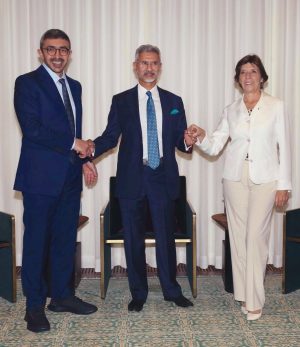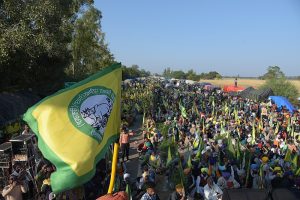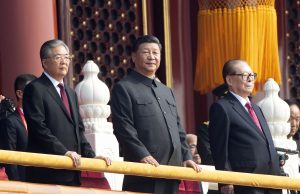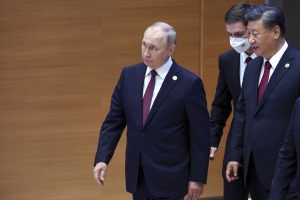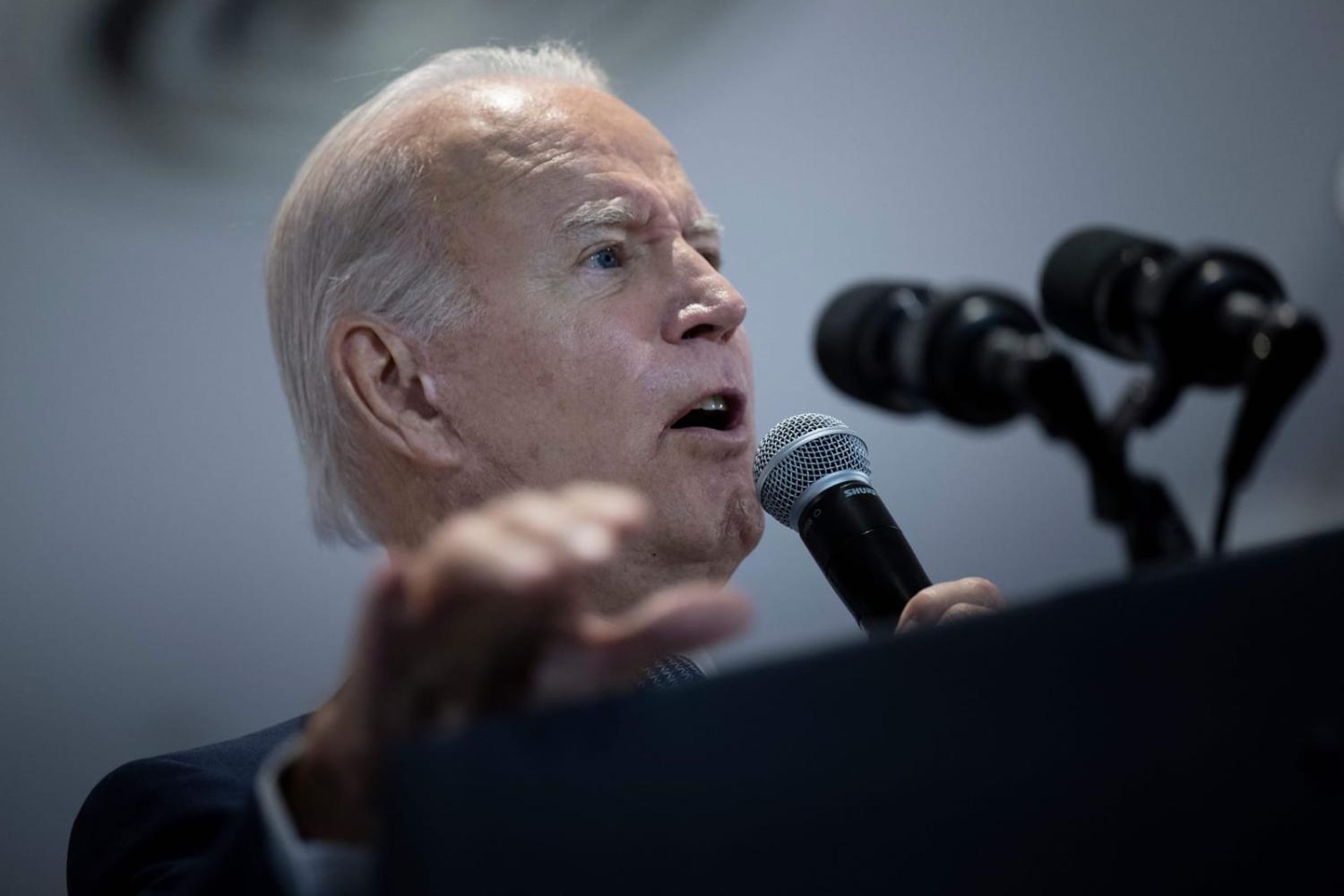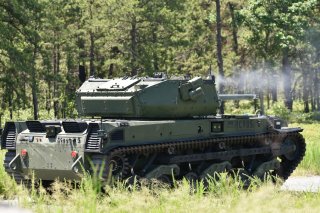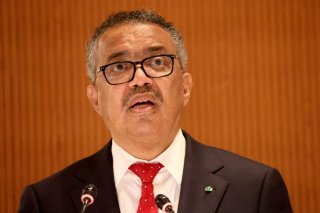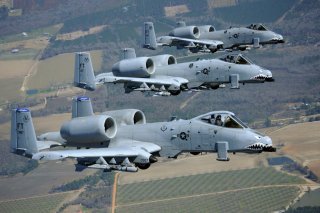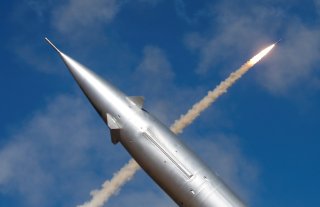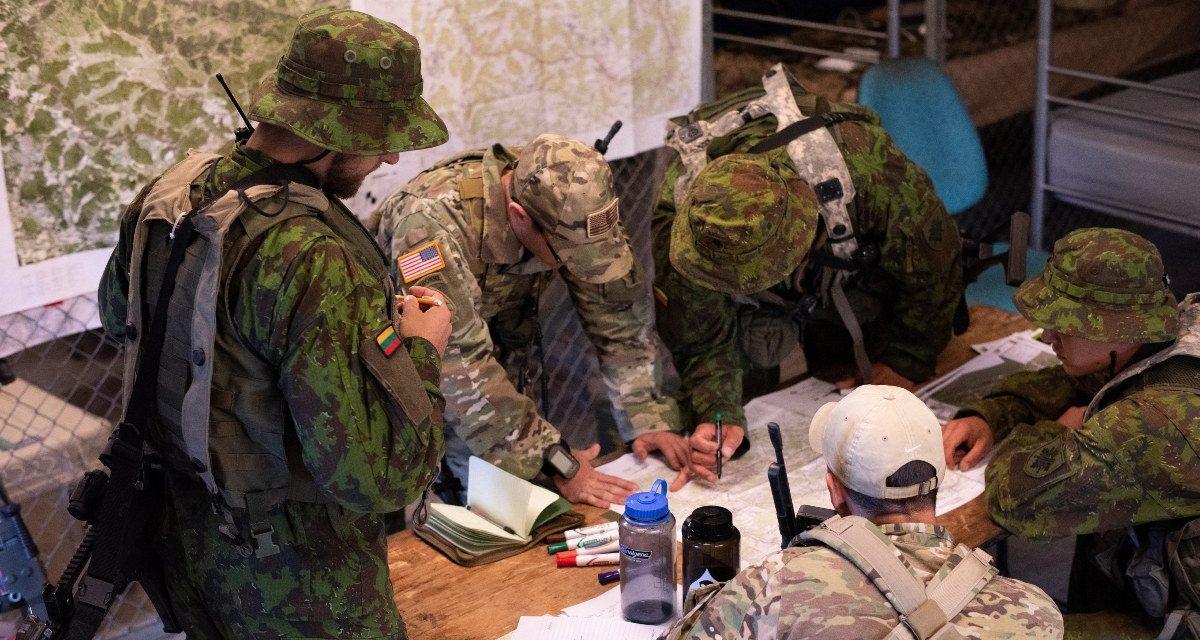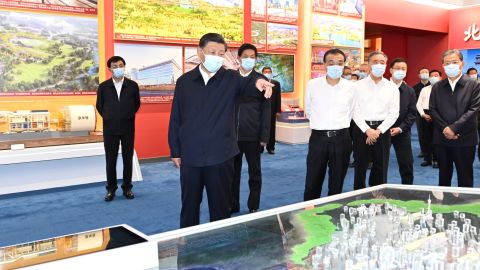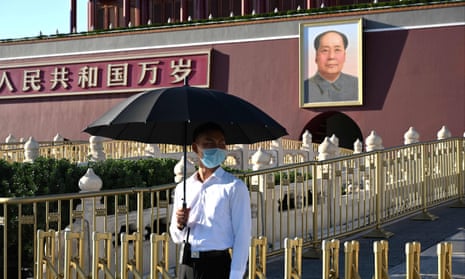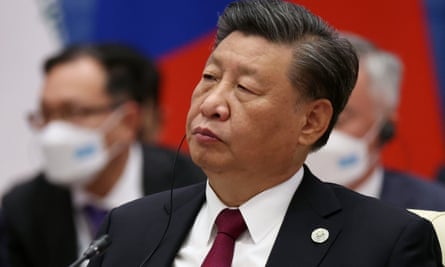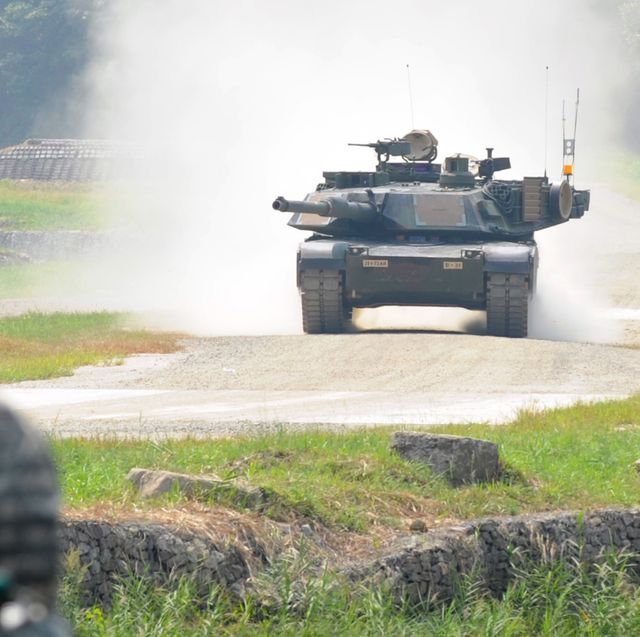Helen Davidson
Purges of senior officials and unfounded rumours of military coups in Beijing have fed into feverish speculation ahead of a key meeting of China’s ruling party next month, when president Xi Jinping is expected to be granted an unprecedented third term.
The jailing of a clique of senior security officials for corruption, followed by days of strange and quickly dispelled rumours of Xi being under house arrest, have fuelled what one analyst called a “hothouse” environment mired in secrecy and suspicion.
Last week, a Chinese court jailed the former vice-minister of public security Sun Lijun, the former justice minister Fu Zhenghua, and former police chiefs of Shanghai, Chongqing and Shanxi on corruption charges. Fu and the police chiefs had been accused of being part of a political clique surrounding Sun, and being disloyal to Xi.
The round-up was one of the biggest Chinese political purges in years, and came just weeks before the Chinese Communist party’s (CCP) most important political meeting – the twice a decade party congress – where the political elite are reshuffled around the various positions of power in the one-party state.
Xi is expected to be reappointed as leader of the party and military commission at the meeting, after he abolished the two-term limit in 2018 and waged a years-long anti-corruption campaign that also targeted many political opponents.
On Sunday state media announced the list of CCP central committee delegates, numbering almost 2,300, had been finalised. Xi’s inclusion on the list further refuted social media rumours that had been swirling since Saturday of a military coup. The unfounded claims – accompanied by unsourced videos of military vehicles and based mostly on mass flight cancellations – were debunked, but not before it began trending on Twitter.
There was no specific mention of the coup rumours on China’s social media, but a Weibo hashtag related to “airports across the country cancel flights” was viewed by more than 200,000 people over the weekend.
Drew Thompson, a scholar with the Lee Kuan Yew School of Public Policy, said a coup in China wasn’t entirely implausible, and Xi had reportedly shown concern about the prospect in the past, but the weekend’s rumours looked more like “wishful thinking”. They appeared to originate in accounts associated with the Falun Gong movement, which Thompson said was “essentially not credible”.
“The rumour that Xi Jinping has been arrested has legs because it is such a sensitive political moment in China, and the recent trials (and convictions) of long-serving senior officials creates a hothouse atmosphere,” he said on Twitter.
Chinese president Xi Jinping Photograph: Sergei Bobylev/AP
Thompson, who is also a former US state department official, told the Guardian the Falun Gong media often exaggerated or highlighted their opposition to Xi and the CCP in their reporting. “In this case those themes they have highlighted and reported on for a long time suddenly broke into the mainstream.”
Other analysts like Sinocism author, Bill Bishop, said he thought the rumours were “BS” but the “inherent opacity” of the CCP mechanisms easily fuelled their spread.
The party congress is a secretive process of power distribution, with the most senior positions not announced until the final day. Government control of the domestic narrative and crushing of dissent has intensified in recent weeks as the meeting approaches.
Xi has been absent from the public eye since he returned to China from the SCO Summit in Uzbekistan last weekend. Observers said he is likely to be quarantining.
“I think the fact this rumour spread so far, and was considered plausible enough to analyse is really a reflection of an underlying shortcoming of Chinese governance,” said Thompson.
“It really is a story about the opaqueness and the uncertainty around high-level Chinese succession. If you look back through history, to 1949, succession between top leaders has been fraught. Hu Jintao was the first successful transition of power where no one was imprisoned or died … Xi Jinping has created an entirely new paradigm where no successor has been identified, which raises questions about what would succession look like if it was unplanned or uncontrolled?”
China’s government has not responded to the rumours, but public security authorities were among those posting under the hashtag “the truth about large-scale cancellation of flights across the country”, disputing the significance of the cancellations which they said was normal for the pandemic.
The party congress begins on 16 October. The event, in Beijing’s Great Hall of the People, is closed to the public but is the most important date on the CCP’s five-year political cycle. There is speculation that Xi could further consolidate power with the promotion of stronger allies to senior positions, and that the party will resurrect the “people’s leader” title, not used since Mao Zedong.
… as you’re joining us today from India, we have a small favour to ask. Tens of millions have placed their trust in the Guardian’s fearless journalism since we started publishing 200 years ago, turning to us in moments of crisis, uncertainty, solidarity and hope. More than 1.5 million supporters, from 180 countries, now power us financially – keeping us open to all, and fiercely independent.
Unlike many others, the Guardian has no shareholders and no billionaire owner. Just the determination and passion to deliver high-impact global reporting, always free from commercial or political influence. Reporting like this is vital for democracy, for fairness and to demand better from the powerful.
And we provide all this for free, for everyone to read. We do this because we believe in information equality. Greater numbers of people can keep track of the events shaping our world, understand their impact on people and communities, and become inspired to take meaningful action. Millions can benefit from open access to quality, truthful news, regardless of their ability to pay for it.
Every contribution, however big or small, powers our journalism and sustains our future.

